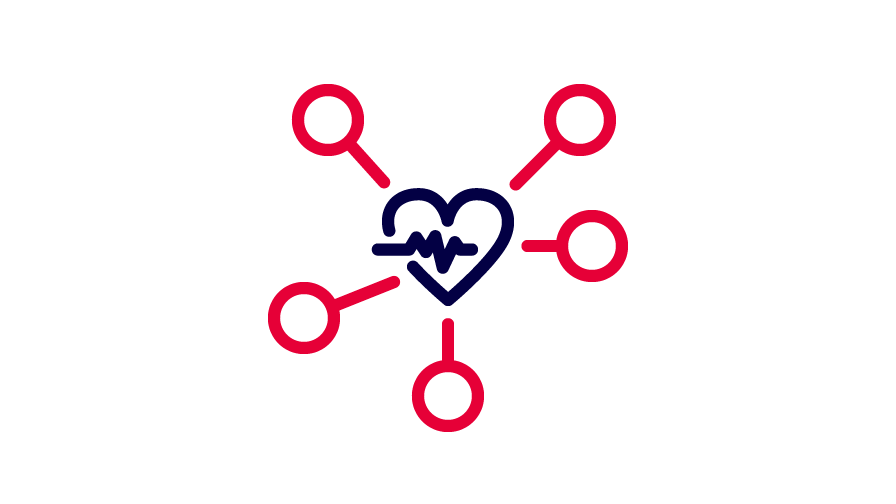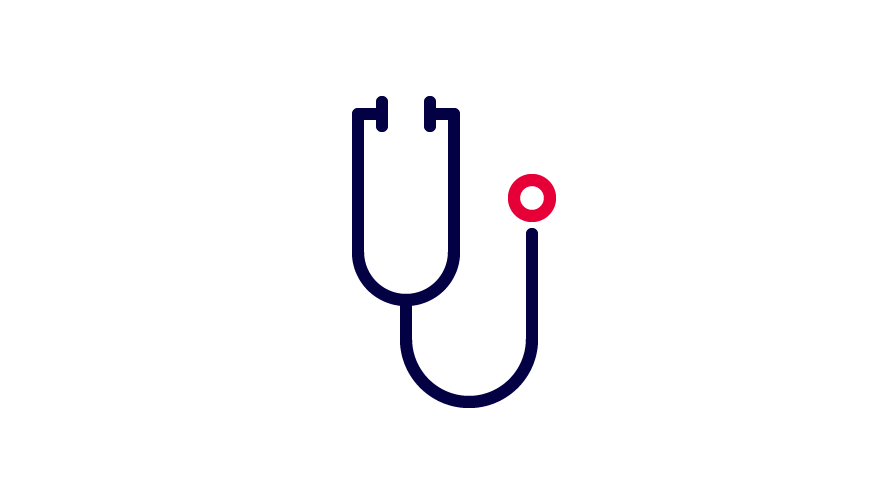
Electronic Health Professional Card (eHPC)
Signature and authentication in digital healthcare

The electronic Health Professional Card (eHPC) is a personalized smart card that can be used in the telematics infrastructure as ID for healthcare professionals. The eHPC enhances data security and privacy in the digital health network. Doctors and dentists, psychotherapists or pharmacists can obtain the eHPC from their respective federal state chambers and gematik GmbH for mail-order pharmacies.
The electronic health profession register (eGBR) will issue on behalf of the federal states electronic health professional cards to unlicensed providers of medically prescribed services who do not have a chamber of their own to issue such cards. Currently, members of the professional groups physiotherapy, midwifery and obstetrics, nursing professionals and emergency paramedics can order the eHPC.

Don’t miss the deadlines – Order your eHPC now

Since 1 July 2021, doctors, psychotherapists and dentists have needed an electronic health professional card for TI access, as service providers have been required to keep electronic patient records ever since this date. The electronic certificate of incapacity for work (eAU) and the e-prescription, for which an eHBA is mandatory, have also been introduced.
Our Step-by-step Guide explains which documents and information you need to apply for your card.
Your advantages at a glance
-
Secure access to the telematics infrastructure and the electronic health card
-
Write access to TI applications
-
Qualified electronic signature (QES) for writing access to ePA applications and for issuing e-prescriptions and eAU
-
Batch signature and convenience signature possible
-
Encryption of medical data
-
gematik-certified solution
-
Future-proof with the latest G 2.1 card generation
Product details
The eHPC enables legally binding signatures and authentication in the telematics infrastructure.
The electronic Health Professional Card (eHPC) unambiguously identifies the holder as a member of the relevant medical profession and offers secure access to the telematics infrastructure and the electronic health card. With the introduction of the telematics infrastructure (TI), paper-based processes will increasingly make way for digital processes. The eHPC is required in order to create legally secure electronic signatures which are mandatory for certain medical applications (e.g. electronic doctor’s letters, digital lab referrals).
The electronic health professional card (eHPC) will become an essential instrument for staff in the health sector because it provides the following security-relevant functions:
Doctors, dentists, psychotherapists and pharmacists can use the eHPC as a means of identity in the digital world of the healthcare sector. The card provides access to specially protected areas, such as the TI as well as portals provided by the medical chambers or statutory health insurance associations. eHPC holders can authenticate themselves online with the card.
The holder can use the eHBA to create an electronic signature (qualified electronic signature – QES), such as for digitally signing an electronic medical report, e-prescription, eAU and other documents. This signature is legally equivalent to a handwritten signature. The eHBA also allows signatures to be triggered with a single PIN entry (batch signature or convenience signature). The electronic signature of the eHBA can also be used outside the TI if a card reader and signature software are available.
The eHPC can be used to send encrypted medical data that can be decrypted on receipt. In this way, the eHPC allows medical professionals to securely exchange electronic data among each other or with hospitals and health insurance companies. This boosts the level of privacy when personal medical data is transmitted.
The eHPC can be used to access patient data stored on the electronic health card.
The issuers of the eHBA for doctors and dentists are the state medical and dental associations, for psychotherapists the state psychotherapy associations, for pharmacists the competent state pharmacy associations and for mail-order pharmacists and pharmacy assistants gematik GmbH. The issuer for other pharmacy professions is gematik GmbH. The Electronic Health Professions Register (eGBR) assumes the role of issuer for non-licensed healthcare professions. The application process differs in the details depending on the sector. As a rule, however, the health professional card is ordered directly from D-Trust. Please note that the ordering process may vary depending on the issuer and sector. Generally, the applicant must first register to apply for the eHBA in the portal of the responsible card issuer to receive a transaction number. The order process for an eHBA requires the applicant to be identified.
One service that D-Trust offers its customers is online identification with the eID online card function, which allows you to identify yourself conveniently from home with your ID card.
eHPC add-on: online signatures with TI Remote Signature
In addition to the electronic health professional card, the remotely triggered qualified signature with TI Remote Signature can be used outside the telematics infrastructure to sign electronic documents in the healthcare sector, e.g. health insurance accounts and prescriptions. No matter where, the signature can be conveniently used via the web browser, irrespective of hardware or software. There are also plans to integrate this into customary IT systems in medical practices. TI Remote Signature has also been used up to now outside the telematics infrastructure using secure two-factor authentication (with SMS-TAN or biometric), it complies with the eIDAS Regulation and can therefore be used throughout the EU in a manner recognised by law. The application process is simple and possible without any additional identification if consent to this is granted when ordering the eHPC.
In order to spare you double trips, when you order the eHPC, you can consent to D‑Trust also using the identification carried out for the eHPC to create a qualified certificate for the sign‑me remote signature. All you need to do in this case is to tick the box entitled ‘Consent to use identification ....’ in D‑Trust’s application portal. There are no extra costs or obligations involved.
Downloads
Frequently Asked Questions
The eHPC for doctors, dentists, psychotherapists, pharmacists is issued by their respective federal state medical chamber and gematik GmbH for mail-order pharmacies. The chamber for other pharmacy professions is gematik GmbH. For unlicensed health professions, the electronic health professional register (eGBR) assumes the role of chamber.
For security reasons, the eHPC has a maximum term of 5 years.
D‑Trust GmbH, a Bundesdruckerei company, produces the eHPC.
The main difference between the two card types is the encryption method used. Generation G 2.1 cards also use the more advanced ECC (Elliptic Curve Cryptography) encryption method.
G 2.0
According to gematik specifications for online productive operation (Level 1) – OPB1 Release 1.6.4/Product Type Version 4.4.0-2
Certificates on the eHPC:
- X.509 nonQES (for authentication and encryption)
- X.509 QES (for signing)
- CV certificate 1 (for access to electronic health card (eGK) G1 plus)
- CV certificate 2 (for access to eGK G2)
Device certificate (for device authentication)
The eHPC G 2.0 is basically a single signature card. Within the TI, however, the eHPC G 2.0 will be mass-signature enabled – provided that it is used together with an eHealth-enabled connector. This combination enables signing with up to 250 signatures with just a single PIN entry. Outside the TI, the eHPC G 2.0 acts like a single signature card.
G 2.1
According to gematik specifications for online productive operation gemProdT_HBA_ObjSys_G2_1_PTV_4.7.1-0
Certificates on the eHPC:
- RSA and ECC X.509 nonQES (for authentication and encryption)
- RSA and ECC X.509 QES (for signing)
- CV certificate 1 (for access to electronic health card (eGK) G1 plus)
- CV certificate 2 (for access to eGK G2)
Device certificate (for device authentication)
The G 2.1 (IDEMIA_HC_Germany_NEO_G2.1_HBA, V1) generation eHPC has the functionality of a mass-signature card. Up to 250 signatures can be created with a single PIN entry both inside and outside the TI.
Yes, the purchase of an electronic health professional card or electronic professional card is subsidised by refinancing agreements with the GKV-Spitzenverband (National Association of Statutory Health Insurance Funds). The amount of the subsidy depends on the sector. For detailed information, please contact the association responsible for you.
For doctors, dentists and psychotherapists:
- eHPC application
Since the electronic health professional card is issued by the federal state chambers for doctors, dentists and psychotherapists, the eHPC must first be applied for there. For more information, please contact your chamber. Alternatively, you can use the D‑Trust Application Portal https://ehealth.d-trust.net/antragsportal/. After selecting the chamber responsible for you, you will be forwarded to the correct office.
Once your application has been approved, the chamber will send you a transaction number which you can use to order the electronic health professional card from D‑Trust - Online application with D‑Trust at: https://ehealth.d-trust.net/antragsportal/
You can now enter this transaction number in the Application Portal. You will then receive a prefilled application, including a form for identification using the Post‑Ident service, which you will have to complete, print out and return by post. - Identification
Since the eHPC is a high-quality personal photo ID card, secure identification is mandatory and you will need the forms that you received together with the application documents. - Production of the eHPC
After identification and confirmation have been carried out by the association, production of the electronic health professional card is triggered. The card is sent to the purchaser by registered post the following day. The necessary PIN and PUK will also be sent to the recipient 3 days later. Please note that you need to activate the card in the application portal in order to be able to use it. The card has to be activated for use in the telematics infrastructure as well. You can find detailed information on how to do this in our activation instructions.
For pharmacists:
- Administrative act by the state chambers of pharmacists
As a first step, you must submit your application for issuance of a pharmacist’s card to your state chamber of pharmacists. Alternatively, you can use our portal: https://ehealth.d-trust.net/antragsportal/. After selecting the chamber responsible for you, you will be directed to the correct office. Your application will first be received and the so-called administrative act will be triggered during which a check will be carried out to ascertain whether all the preconditions are met. A transaction number will also be assigned. The administrative act is completed when the application is approved. - Online application with D‑Trust at: https://ehealth.d-trust.net/antragsportal/
You can now enter the transaction number assigned by the chamber of pharmacists in the Application Portal. You will then receive a prefilled application, including a form for identification using the Post‑Ident service, which you will have to complete, print out and return by post. - Identification
Since the pharmacist’s card is a high-quality personal photo ID card, secure identification is mandatory and you will need the forms that you received together with the application documents. - Production of the pharmacist’s card
After identification and approval have been carried out by the association, production of the pharmacy card is triggered. The card is sent to the pharmacist by registered post the following day. The necessary PIN and PUK will also be sent to the recipient 3 days later. Please note that you need to activate the card in the application portal in order to be able to use it. The card has to be activated for use in the telematics infrastructure as well. You can find detailed information on how to do this in our activation instructions.
For Nurses, Midwives, Physiotherapists, Emergency Paramedics, Occupational Therapists, Podiatrists and Speech Therapists:
- eHBA Application
Since the Electronic Health Professions Register is the issuer of the electronic health professional card for non-approved health professions, the eHBA must first be applied for there by the applicant. To do this, please contact the eGBR directly. There you will receive the approval to submit the application by transaction number. - Online application with D-Trust at: https://ehealth.d-trust.net/antragsportal/
You now have the option of starting in the application portal with the specified transaction number. After entering the transaction number, you will receive a pre-filled application, which you only need to complete, print out and send off. - Identification
As the eHBA is a personalised, high-quality ID card, secure identification is absolutely essential. To do this, you need the forms that you receive together with the application documents. Please note the separate instructions on identification. - eHBA Production
After identification and confirmation have been carried out by the eGBR, production of the electronic health professional card is triggered. The card is sent to the purchaser by registered post the following day. The necessary PIN and PUK will also be sent to the recipient 3 days later. Please note that you need to activate the card in the application portal in order to be able to use it. The card has to be activated for use in the telematics infrastructure as well. You can find detailed information on how to do this in our activation instructions.
The electronic health professional card can be directly ordered on the D‑Trust Application Portal: https://ehealth.d-trust.net/antragsportal.
ID photo (does not apply to health-care providers):
As the eHBA is a high-quality photo ID card for physicians and pharmacists, you also need to be clearly recognisable in the photo. Please make sure that your face/head is in the centre of the photo. The file size must not exceed 12 MB. The following file formats are accepted: JPG, JPEG, PNG and GIF
During the application process, you can also optimize the photo after you have uploaded it. This function allows you to select an area of the photo, rotate the image and choose a contrast version.
Please note that the ID card is produced as you see it in the application portal. Once the application process has been completed, no changes may be made to the photo for technical reasons. Further information can be found in the detailed cross-sectoral step-by-step Guide to applying for the eHPC.
Optional order code:
Entering the order code is optional and intended for customers who have been referred to D‑Trust by partners.
You will receive your eHBA by registered mail at the address provided. You will receive the PIN letter by post three days after your eHBA is sent.
The delivery time for the electronic health professional card is currently approx. 10 days from receipt of the complete documents by D-Trust. A complete incoming order means that the identification process has been successfully completed and that the complete application documents (signed application) and approval of the responsible card issuer have been submitted to D-Trust.
Please note that due to the current high volume of orders delivery may take longer and we would like to apologise for any delay you may experience.
- Identservice of DPAG (Deutsche Post AG): A personalised link will take you to the Deutsche Post website. There you will have the option of choosing between two procedures: 1. The traditional postal identification procedure, which is carried out at a Deutsche Post branch, or 2. Online identification with the eID function of your ID card, conveniently from home.
- On-site identification by qualified employees of the trust service provider D-Trust, its partners (e.g., CGM Easy Ident) or by your facility’s own previously trained and authorised employees: Identification takes place at your premises or at a central event. All you need for this are the complete application documents and your valid identification document stored in the application documents. Advantage: You will be identified directly on site and will not have to go to the post office.
Please note that you will need to use the same ID document for identification that you provided in the application, and you will also need to enter the information according to the details in the ID document.
The application process is completed with your identification and transmission of the complete application documents signed by you to D-Trust GmbH. As soon as this information has been received by D-Trust, approval will be obtained from your card issuer.
You might also be interested in these products
Do you have any other questions about the eHBA?
+49 (0)30 2598 - 4050
ehealth-support@bdr.de









